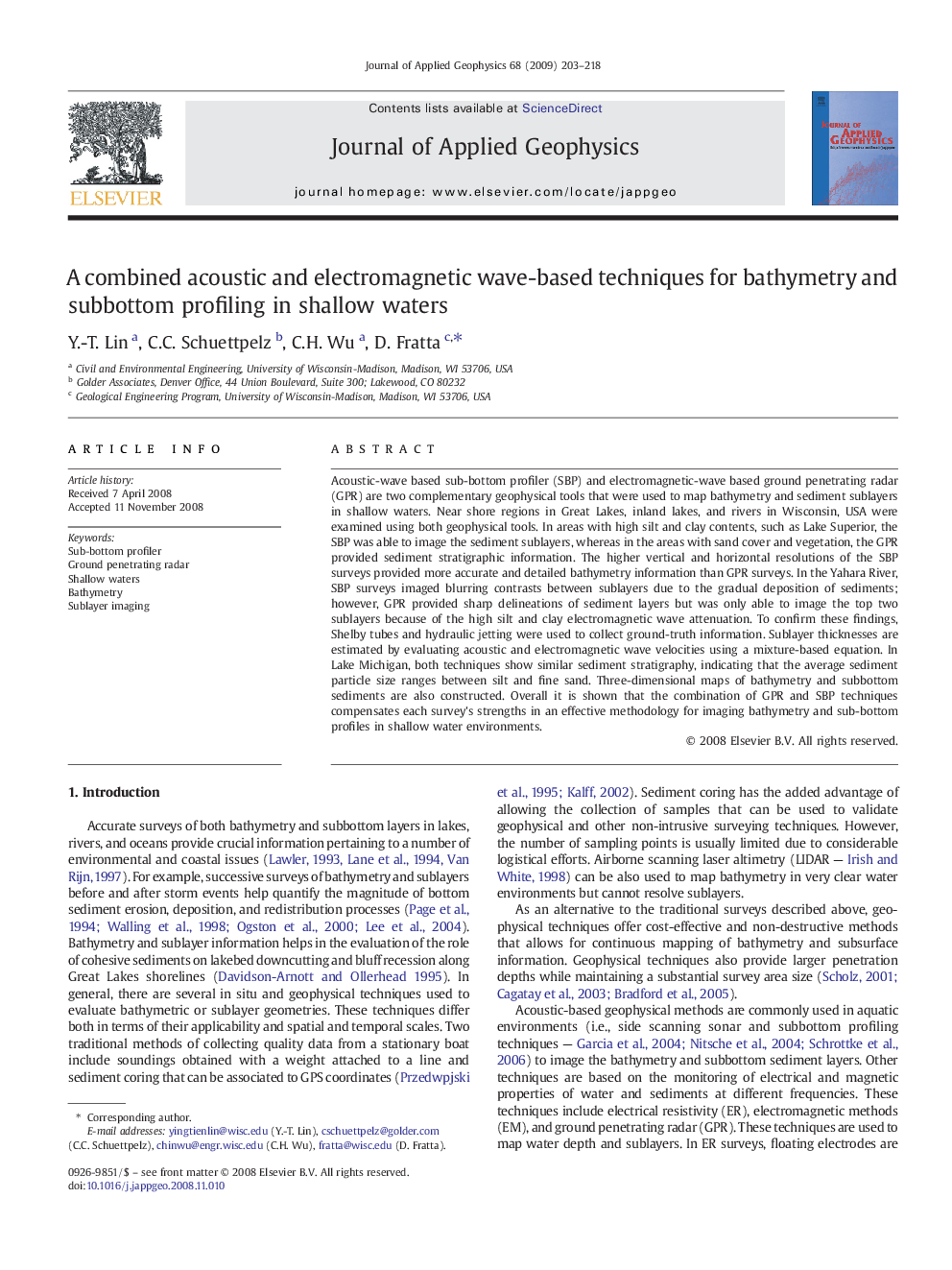| Article ID | Journal | Published Year | Pages | File Type |
|---|---|---|---|---|
| 4741161 | Journal of Applied Geophysics | 2009 | 16 Pages |
Acoustic-wave based sub-bottom profiler (SBP) and electromagnetic-wave based ground penetrating radar (GPR) are two complementary geophysical tools that were used to map bathymetry and sediment sublayers in shallow waters. Near shore regions in Great Lakes, inland lakes, and rivers in Wisconsin, USA were examined using both geophysical tools. In areas with high silt and clay contents, such as Lake Superior, the SBP was able to image the sediment sublayers, whereas in the areas with sand cover and vegetation, the GPR provided sediment stratigraphic information. The higher vertical and horizontal resolutions of the SBP surveys provided more accurate and detailed bathymetry information than GPR surveys. In the Yahara River, SBP surveys imaged blurring contrasts between sublayers due to the gradual deposition of sediments; however, GPR provided sharp delineations of sediment layers but was only able to image the top two sublayers because of the high silt and clay electromagnetic wave attenuation. To confirm these findings, Shelby tubes and hydraulic jetting were used to collect ground-truth information. Sublayer thicknesses are estimated by evaluating acoustic and electromagnetic wave velocities using a mixture-based equation. In Lake Michigan, both techniques show similar sediment stratigraphy, indicating that the average sediment particle size ranges between silt and fine sand. Three-dimensional maps of bathymetry and subbottom sediments are also constructed. Overall it is shown that the combination of GPR and SBP techniques compensates each survey's strengths in an effective methodology for imaging bathymetry and sub-bottom profiles in shallow water environments.
